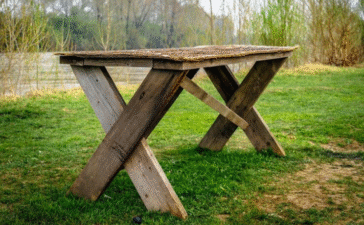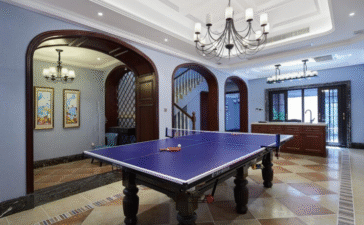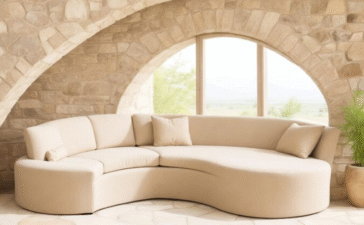In a world that often feels chaotic and loud, many people seek a path toward inner peace and spiritual clarity. For some, this journey leads to a unique and profound way of life: monastic living. These dedicated homes for monks, found across various religious traditions, offer a structured environment for deep spiritual growth, community, and service.
This guide will explore the world of monastic life. We will cover the daily routines, the guiding principles, and the different types of home for monks available, from ancient monasteries to modern retreat centers. Whether you are curious about what it takes to become a monk or seeking a temporary spiritual retreat, you will gain a clear understanding of this transformative path.
What Is a Home for Monks?
A home for monks, often called a monastery or abbey, is a spiritual community where individuals dedicate their lives to religious practice, contemplation, and service. These homes are central to many faiths, including Buddhism, Christianity, and Hinduism, providing a sanctuary for those who have chosen to renounce worldly pursuits in favor of a deeper connection with their faith.
The significance of these religious homes extends beyond the individuals who reside there. Historically, they have been vital centers for preserving sacred texts, art, and knowledge. Today, they continue to serve as beacons of spiritual guidance, offering support and tranquility to the wider community.
The Essence of Monastic Living
Life within a monastery is structured and disciplined, designed to foster spiritual growth and mindfulness. It is a world away from the distractions of modern life, focusing instead on simplicity, prayer, and communal harmony.
Daily Life in a Home for Monks
A monk’s daily routine is typically organized around a schedule of prayer, work, and study. While the specifics vary between traditions, a typical day might look like this:
- Morning: The day often begins before dawn with communal prayer or meditation, setting a contemplative tone. This is followed by a simple breakfast and a period of work. This work, known as ora et labora (pray and work) in the Benedictine tradition, can range from farming and gardening to scholarly research or crafting goods.
- Afternoon: After a communal lunch, monks may engage in further work, study, or personal prayer. Many monasteries observe periods of silence to help maintain a peaceful and reflective atmosphere.
- Evening: The day concludes with evening prayers, a final meal, and a period of quiet reflection before retiring for the night. This disciplined monastic routine helps cultivate self-awareness and a deeper connection to the divine.
The Monastic Code: Spiritual and Ethical Guidelines
Monks commit to a set of spiritual and ethical guidelines, often taking formal vows. These monastic vows commonly include:
- Poverty: Renouncing personal possessions to live simply and depend on the community.
- Chastity: Abstaining from romantic relationships to dedicate oneself fully to spiritual life.
- Obedience: Following the guidance of the community’s leader and the established rules of the order.
These codes are not merely restrictions; they are tools for spiritual liberation. By releasing worldly attachments, monks can focus more intensely on their inner journey toward peace and enlightenment.
Types of Home for Monks
Monastic communities have evolved over centuries, leading to a variety of homes that range from ancient, secluded institutions to modern, accessible centers.
Monasteries: The Traditional Homes for Monks
Traditional monasteries are the bedrock of monastic life. They are often associated with specific religious orders, such as Benedictine monks in Christianity or the diverse lineages within Buddhist monasticism. For example, the Shaolin Monastery in China is renowned for its connection to Zen Buddhism and martial arts, while the monasteries of Mount Athos in Greece have been centers of Eastern Orthodox spirituality for over a thousand years. These historical monasteries play a crucial role in preserving religious traditions and providing a stable foundation for monastic life.
Modern-Day Monastic Homes
Contemporary monastic communities are adapting to the needs of the 21st century. Many now incorporate modern amenities and engage in outreach programs, such as environmental sustainability projects or online teaching. Furthermore, many monasteries function as retreat centers, opening their doors to spiritual seekers who wish to experience monastic life temporarily. These spiritual retreats offer a taste of the tranquility and discipline of the monastery without the long-term commitment.
Joining a Monastic Community: A Spiritual Journey
Embarking on a monastic path is a significant life decision that requires deep personal reflection and preparation.
How to Become a Monk
The process of joining a monastic community, often called discernment, is gradual. The typical steps include:
- Inquiry: An individual first expresses interest and may visit the monastery for short stays.
- Postulancy: If there is a mutual fit, the person may live with the community for several months to a year as a postulant, learning the customs and routines.
- Novitiate: Following postulancy, the individual becomes a novice, receiving more intensive training in the community’s spiritual practices and rules. This period can last one to two years.
- Vows: After completing the novitiate and with the community’s approval, the novice can take temporary vows, which are later renewed as final, lifelong vows.
Qualities sought in candidates often include a stable personality, good health, and a sincere desire for spiritual growth.
The Role of Homes for Monks in Society
Monasteries are not isolated from the world; they often play a vital role in supporting their local and global communities.
Many monasteries are centers for charity work and social service. Monks may engage in teaching, providing healthcare, or distributing food to those in need. For instance, Buddhist monasteries in Southeast Asia are often hubs for education and community support. By living a life of service, monks put their spiritual principles into practice, helping to create a more compassionate world.
You would also like: “best home defense shotgun“
Embrace Monastic Life: A Path to Fulfillment
The decision to pursue a monastic life is a profound calling. It is a path of discipline, community, and deep spiritual exploration that offers a unique form of fulfillment. Whether as a lifelong commitment or a temporary retreat, the home for monks provides a powerful environment for anyone seeking to quiet the noise of the world and listen to the voice within. It is a testament to the enduring human quest for peace, purpose, and a deeper connection to the divine.
Frequently Asked Questions (FAQ)
Can anyone become a monk?
Generally, monastic orders have specific requirements regarding age, health, and marital status (candidates are usually single or widowed). Most importantly, a person must have a genuine spiritual calling and the emotional maturity for communal living.
Can you visit a home for monks without wanting to join?
Yes, many monasteries welcome visitors and offer guest accommodations or organized spiritual retreats. These stays can range from a single day to several weeks.
How do monks support themselves financially?
Monasteries are often self-sufficient. Monks engage in various forms of work, such as farming, brewing, beekeeping, or creating art and crafts. Many also receive financial support through donations from the public and sponsorship programs.
Is it possible to leave a monastery after joining?
Yes. The process of joining is intentionally long to ensure it is the right decision. Individuals are free to leave at any stage, especially during the postulancy and novitiate periods. Even after taking vows, provisions usually exist for a monk to be released from their commitments.












